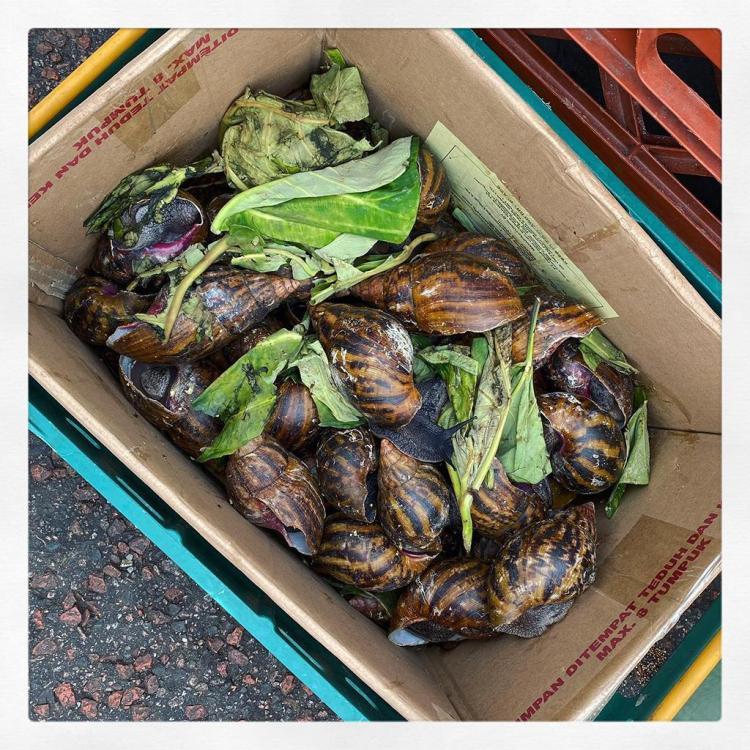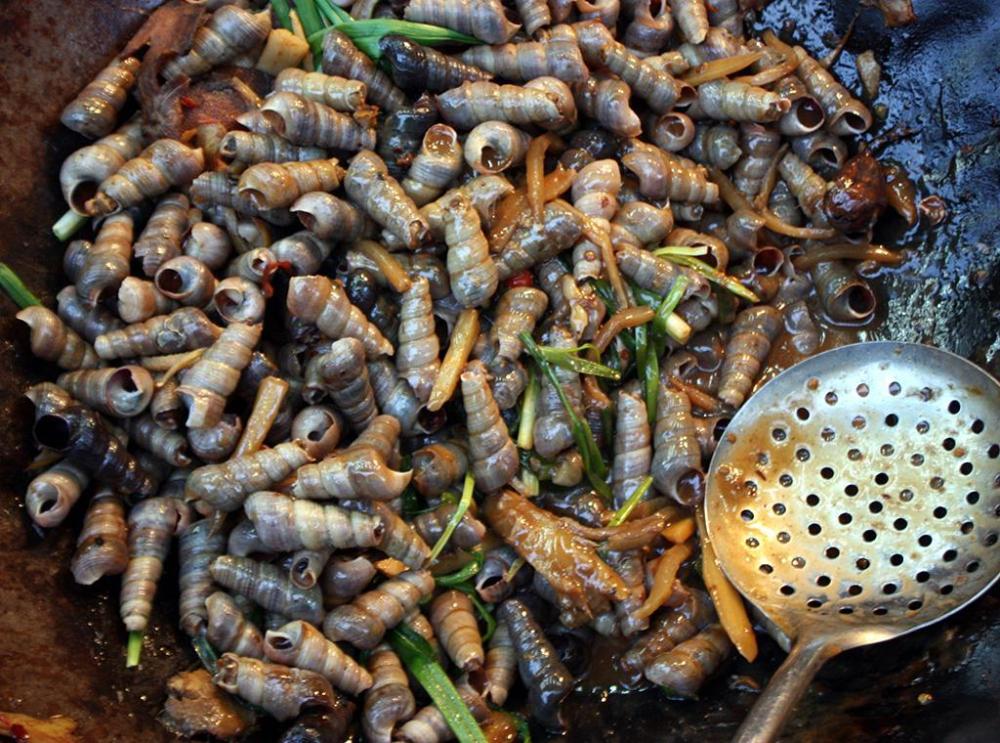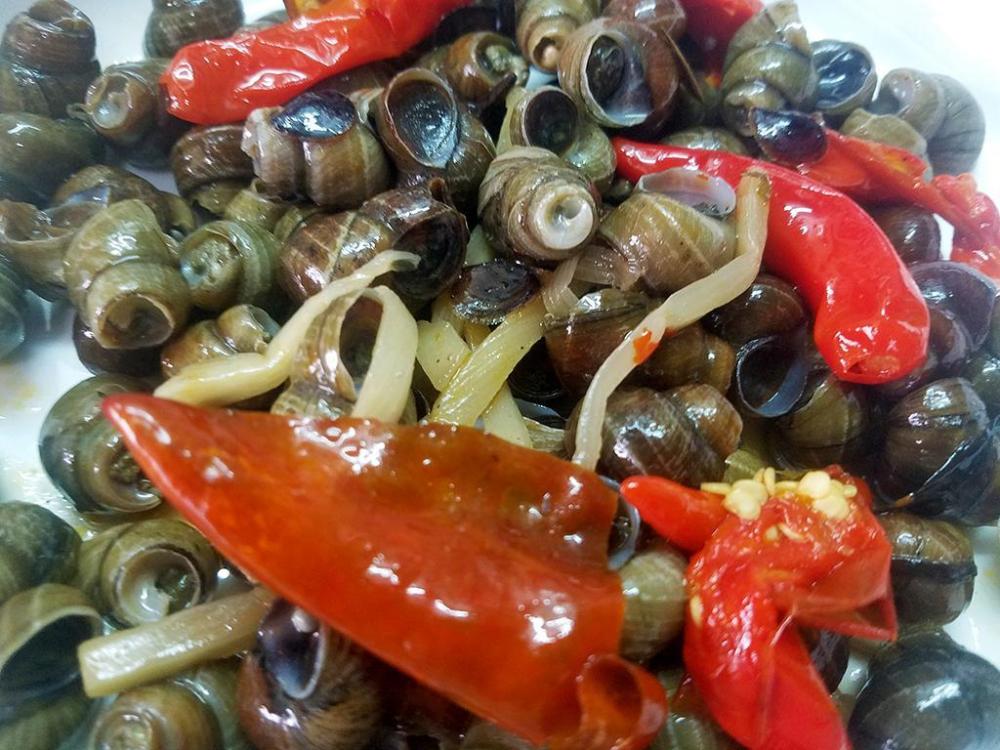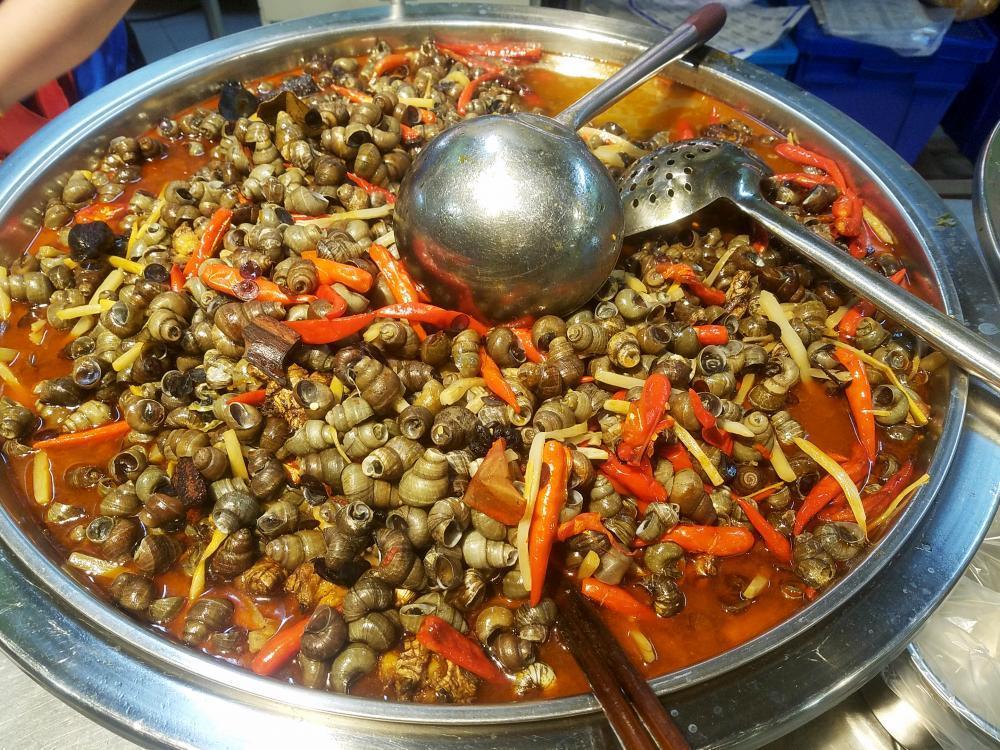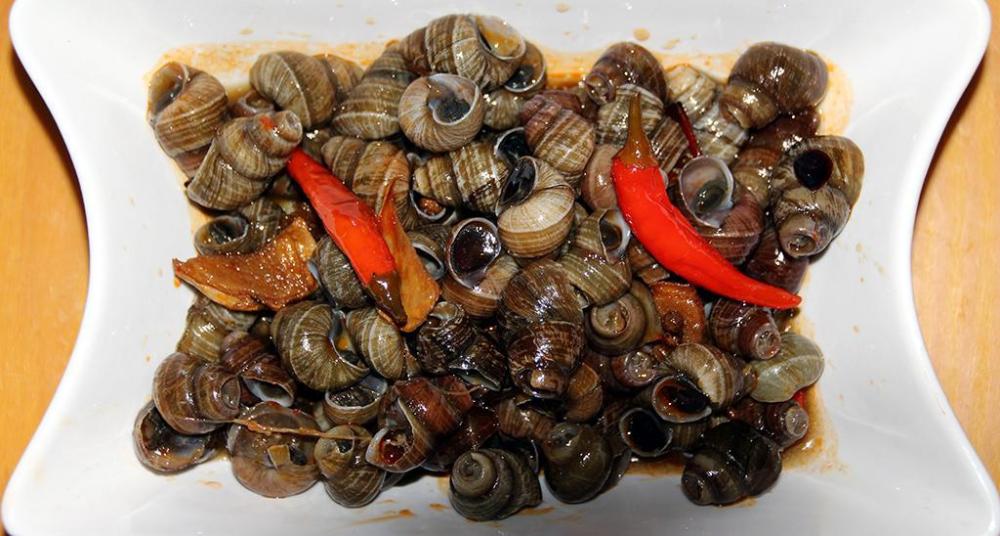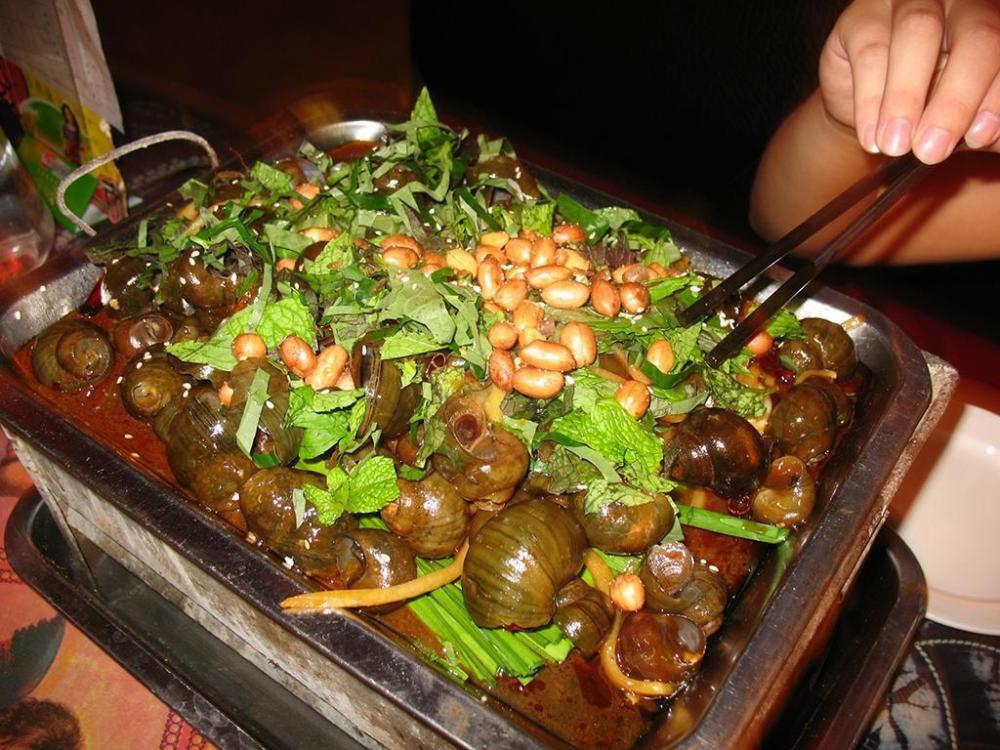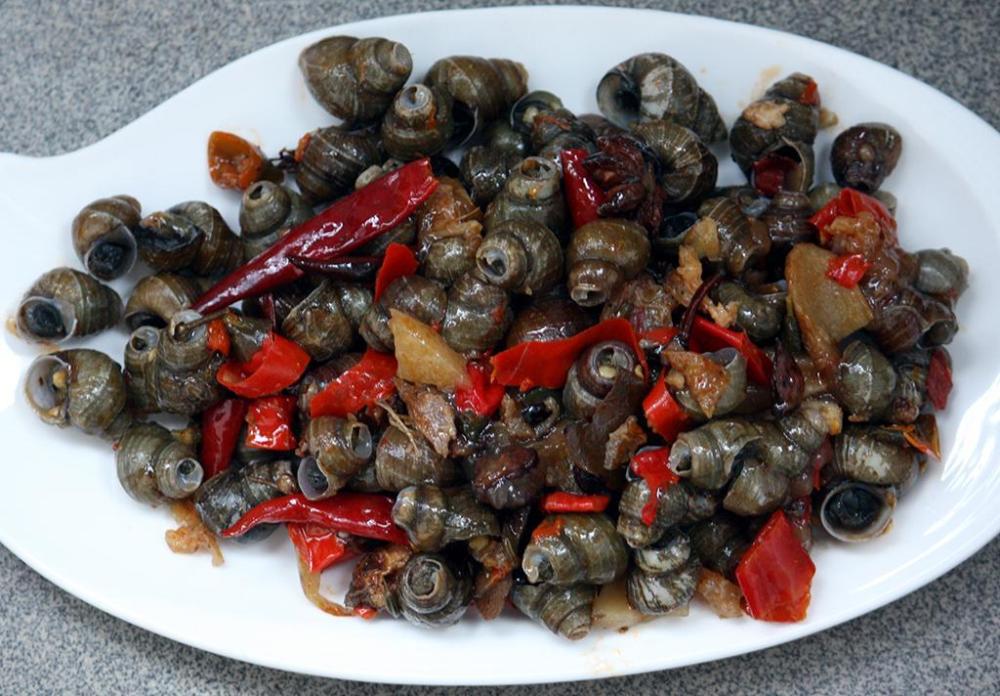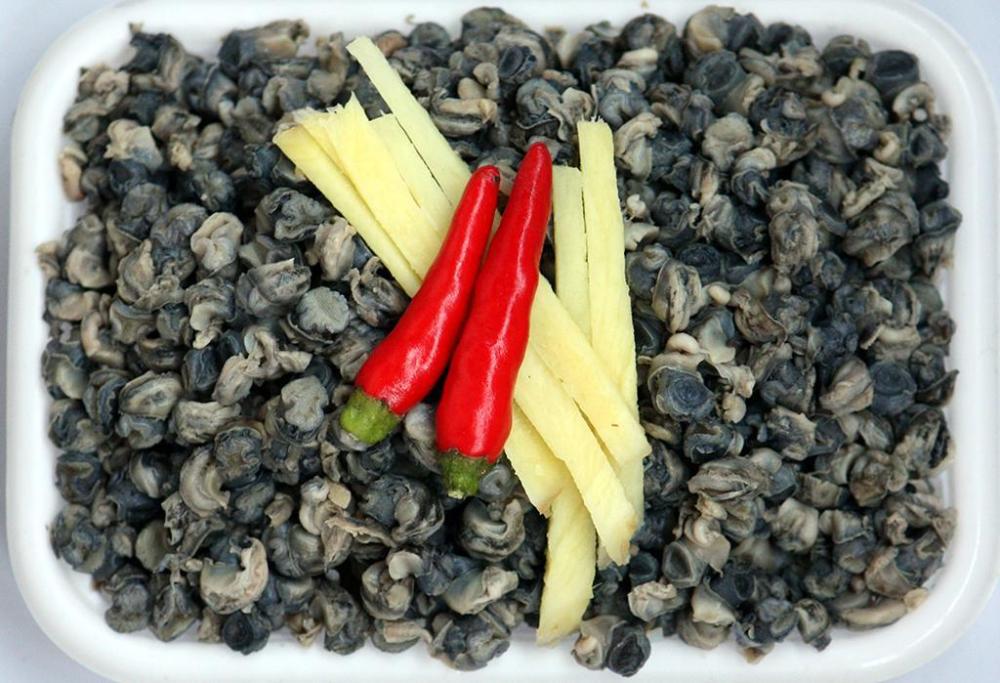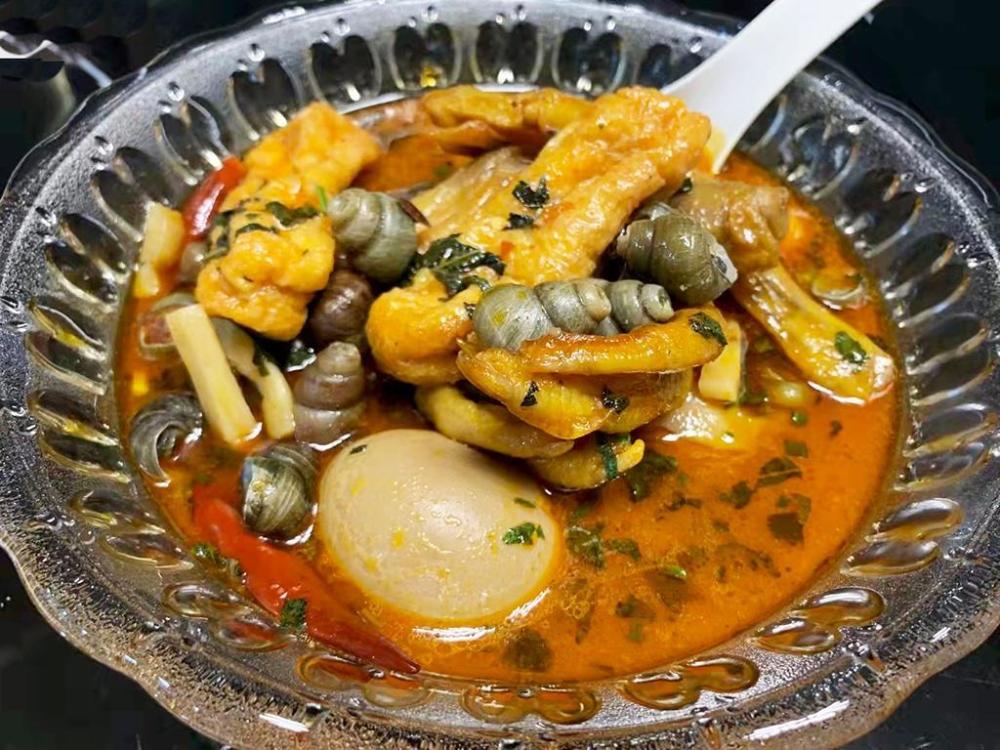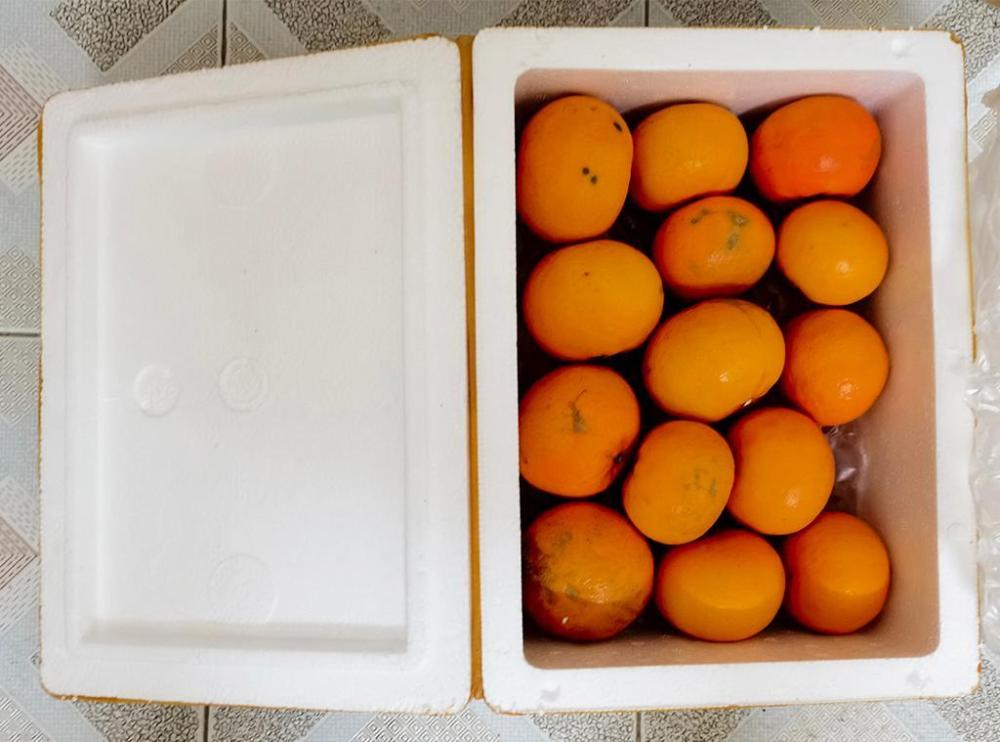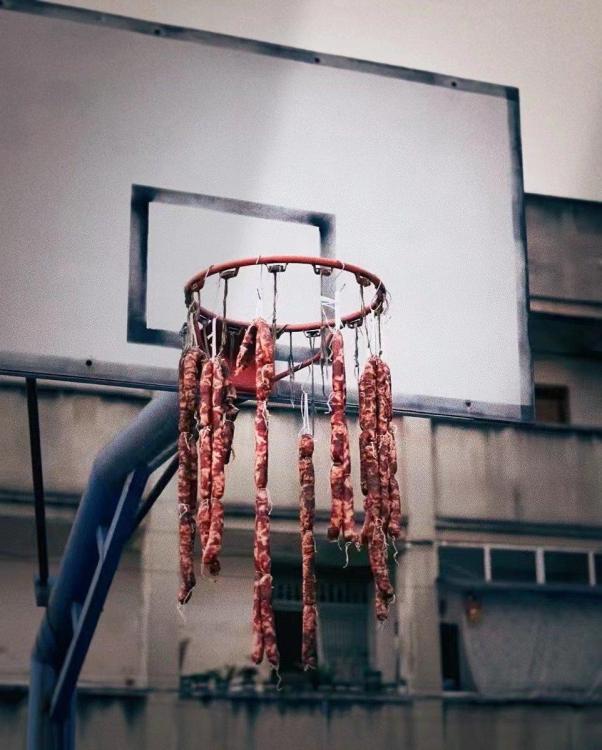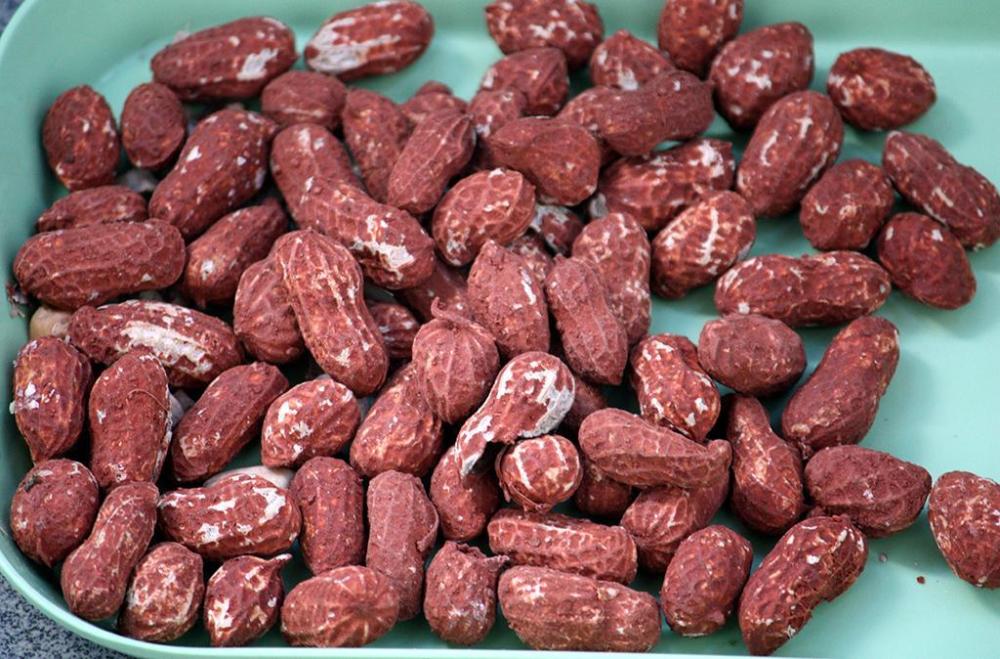-
Posts
16,663 -
Joined
-
Last visited
Content Type
Profiles
Forums
Store
Help Articles
Everything posted by liuzhou
-
Toasted Cheese Cheddar on wholewheat with a little mustard and almost no Worcestershire sauce. Salt and pepper.
-

Snail noodles go viral in China during the pandemic - US NPR news story
liuzhou replied to a topic in Food Media & Arts
I only really pictured the river snails above. We also get and eat Sea Snails Sea snails with clams Land snails African White Jade Snails -

Snail noodles go viral in China during the pandemic - US NPR news story
liuzhou replied to a topic in Food Media & Arts
Yes. Somewhat similar. -
Mr Ramsay is a notorious chili wimp.
-

Snail noodles go viral in China during the pandemic - US NPR news story
liuzhou replied to a topic in Food Media & Arts
Snails are a feature of Liuzhou's cuisine in many ways. They are sold precooked in every supermarket. And uncooked in many markets and supermarkets. There are many small restaurants like this one where almost every dish on the menu features snails. Some examples from various places. Cooked snails from the local supermarket. Close up Cooked snails on the deli counter There is a braised tilapia under that load of snails etc. Snails I cooked More snails Extracted, raw snail meat in the supermarket. As you can see, the snails are usually heavily spiced. They are often paired with ducks' feet. Snail soup with ducks' feet -

Snail noodles go viral in China during the pandemic - US NPR news story
liuzhou replied to a topic in Food Media & Arts
Indeed, that is probably the intended meaning. Unpeed was an obvious typo. Yes. See below. When luosifen is served with snails, the snails are cooked separately as you describe. I have never found then to be muddy More here -

Snail noodles go viral in China during the pandemic - US NPR news story
liuzhou replied to a topic in Food Media & Arts
One 'picks' the meat from the shell round here with 'toothpicks' or if you are sensitive 'cocktail sticks', which are, of course, the same thing, all of which is irrelevant as there rarely are snails in the final dish. They are only used to make the stock. Like people use shrimp heads and shells to make stocks, but don't bung the boiled shrimp bits into their final dish. For the first and possibly last time I agree with Heidih! -

Snail noodles go viral in China during the pandemic - US NPR news story
liuzhou replied to a topic in Food Media & Arts
Days later, I am now involved in an on-going Twitter discussion with the author of the article, moderated (sort of) by a mutual friend. No mention about the snails being 'peeled' or 'unpeeled' so far, thank the gods. The things you people get me into! -
Indeed. I will share them with my dear friend J - who is also a 王 from Guangxi!
-
Mystery solved. I knew it was someone with the family name 王 (wáng) which means 'King' and that they were in Guangxi. Unfortunately, I know about 20 people called 王 in Guangxi. 90% of Chinese people share just 100 family names. 王 is the most common with around 100 million people holding that name! So I asked on WeChat, China's main social media and the culprit confessed.
-
Once more, I'm sitting at home. It's 9:30 pm and I get a phone call saying my delivery has arrived. Once again, I'm not expecting a delivery. I go out and find a guy with a box. It's heavy - 5 kg. 5 kg of oranges. Once again, I've no idea who sent them. There is a second layer underneath the first.
-
That is almost exactly what I had for lunch, too! Only difference was I used leftover roast duck.
-
Got to get those wind dried sausages dried before the Chinese New Year on Feb 1st this year. I've seen them hanging all sorts of places, but this is a brilliant first!
-

Snail noodles go viral in China during the pandemic - US NPR news story
liuzhou replied to a topic in Food Media & Arts
I should note that the bagged luosifen is available in the USA and in the UK. Don't know about Canada. There is or was also a luosifen restaurant in Seattle which a friend went to. She reported that it wasn't as good as Liuzhou, but better than bagged. The article says that I haver never seen "a chunk of braised pig trotter, crispy pork belly, roasted pork" in a luosifen. He has gone off-piste on that part. Also, the image of the dish at the top looks nothing like the real thing. The restaurant has now closed according to some reports; not to others. I'll try to find out. -

Snail noodles go viral in China during the pandemic - US NPR news story
liuzhou replied to a topic in Food Media & Arts
Very carefully. They bite. -

Snail noodles go viral in China during the pandemic - US NPR news story
liuzhou replied to a topic in Food Media & Arts
This implication that the manufacture of trucks and cars ceased in the 1990s is totally incorrect. In fact, it expanded. The city is better known for its automotive industry than for luosifen. There is a highly successful joint venture with General Motors which produces millions of new-energy vehicles each year. Liuzhou has the highest percentage of electric vehicles anywhere in Asia, if not the world. China's largest steel factory is here and the chemical industry is strong. Luosifen is just decoration on top and is a highly volatile market. -

Snail noodles go viral in China during the pandemic - US NPR news story
liuzhou replied to a topic in Food Media & Arts
There is a fairly active Luosifen lovers Facebook page, "我爱螺蛳粉 / I love Luosifen (snail noodles)", at https://www.facebook.com/groups/125375614155376/ where there is more information. The administrator is someone you "know"! -

Snail noodles go viral in China during the pandemic - US NPR news story
liuzhou replied to a topic in Food Media & Arts
Some specific errors. The broth is made from pork bones, unpeeled snails, and various spices and simmered for hours. (How the hell do you peel snails anyway?) The snails are not usually served in the final dish. The tofu is in the form of tofu skin. Lemon vinegar? Grow up! It's rice wine vinegar! Liuzhou has never had a lockdown. It's much older than that. There is strong evidence that it was being sold in 1952! -

Snail noodles go viral in China during the pandemic - US NPR news story
liuzhou replied to a topic in Food Media & Arts
The story, which I had seen, is essntially true - ish. There are huge exaggerations and absolute errors. What they are describing is a pre-packaged highly industrialised semi-instant version of the real thing (which takes at least 16 hours to make properly). The bagged stuff versions are made in Liuzhou, but few are eaten here. They are vastly inferior to the real thing and cost more! I can go out and grab a bowl very easily anywhere in the city for a lot less. The 'funky' smell is greatly exaggerated. It is just salt fermented bamboo. You can walk past a store and if you didn't look, you would never know what they were selling. The idea that they were invented independently by thousands of laid-off factory workers is a fantasy. The local government, after various failed attempts to establish a trendy industry and boost tourism, finally hit on the idea of marketing luosifen. First, they decided that we needed more luosifen restaurants, so they spent millions on tax breaks and rent holidays etc to encourage more people to open shops. People just carried on going to their old favourites and within months, most of the new places closed. Back to the drawing board. Next, they came up with the idea of an instant noodle. Money was poured into research and in the end they managed to produce something not-quite-instant that vaguely resembled luosifen. They didn't really take off. Then in 2020, they slowly began to creep up the ranking tables to become the top online food purchase in China. More factories opened, some better than others. Some don't even use the essential snails. They are vile. In 2021, the Chinese President Xi Jinping visited Liuzhou and "inspected" one of the larger factories, giving an official seal of approval. It was not reported whether or not he ate the dish. -
Yes, it is quite clove heavy, but then so is 5-spice powder.
-
Chinese labels are in that same order, yes.
-
No actual sand involved. See Wurfbainia Villosa here.
-
It most certainly does. Both brown and red skins make a noticeable difference.
-
If you can find them, Chinese Red Mud Peanuts are wonderful. Definitely my favourite. They are covered in a red mud before roasting and have an amazing flavour.







